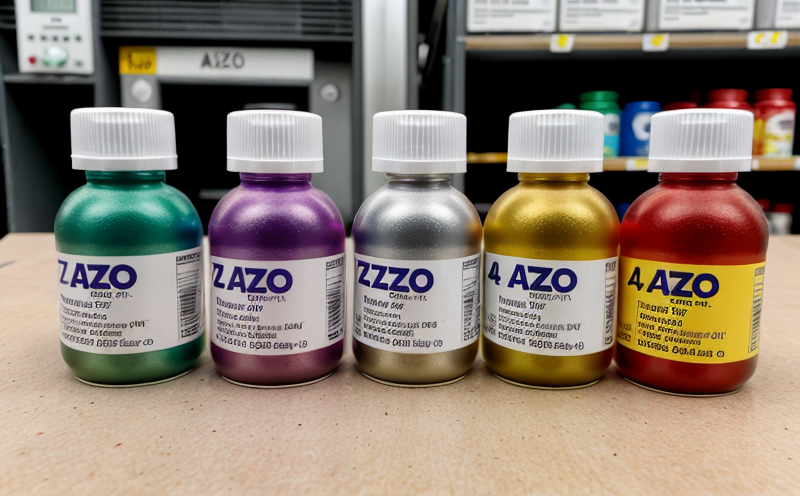Chemical safety testing of azo dyes in home textiles
In today's fast-paced world, consumer demand for sustainable and safe products is at an all-time high. Home textiles form a significant part of daily life, and the chemical safety of these materials plays a crucial role in ensuring user health and well-being. This section focuses on the critical aspect of testing azo dyes found in home textiles to ensure they comply with global regulations concerning harmful substances.
Azo dyes are widely used in textile manufacturing due to their vibrant colors and cost-effectiveness. However, certain types can release toxic amines under specific conditions, posing potential health risks such as skin irritation or cancer if not properly managed. Regulatory bodies like the European Commission (REACH) and U.S. Environmental Protection Agency (EPA) have established strict limits on these harmful substances to protect consumers.
Our laboratory specializes in providing comprehensive chemical safety testing for azo dyes, ensuring that home textiles meet stringent international standards. We employ advanced analytical techniques such as High-Performance Liquid Chromatography (HPLC), Gas Chromatography-Mass Spectrometry (GC-MS), and Fourier Transform Infrared Spectroscopy (FTIR) to detect the presence of harmful amines and other restricted chemicals.
Sample preparation involves thorough washing processes followed by extraction methods tailored for different textile substrates. This meticulous approach ensures accurate detection of trace amounts of azo dyes, which is critical for meeting regulatory thresholds. Our team of experts works closely with clients to provide detailed reports that outline compliance status and suggest corrective actions if necessary.
The importance of this testing cannot be overstated, especially given the increasing emphasis on eco-friendly practices across industries. By partnering with us, organizations can demonstrate their commitment to sustainability while also safeguarding public health. Our services extend beyond mere compliance; they contribute significantly towards building brand trust and fostering long-term customer loyalty.
Our team stays updated with the latest developments in chemical testing methodologies and regulatory changes worldwide. This ensures that our clients receive up-to-date, accurate information regarding their product safety. With years of experience behind us, we pride ourselves on delivering reliable results swiftly and efficiently.
Benefits
Testing for the presence of harmful substances like azo dyes offers numerous benefits to various stakeholders involved in the textile industry:
- Enhanced Consumer Trust: By ensuring that home textiles are free from potentially hazardous chemicals, manufacturers can build a reputation based on reliability and safety.
- Compliance with Regulations: Keeping up-to-date with changing laws helps avoid costly penalties and ensures ongoing adherence to international standards.
- Risk Management: Identifying issues early allows for proactive measures, minimizing potential impacts on brand reputation or operational disruptions.
- Innovation Opportunities: Understanding current trends and regulatory requirements opens doors for developing innovative products that align with consumer expectations.
Competitive Advantage and Market Impact
Chemical safety testing of azo dyes in home textiles not only ensures compliance but also provides a competitive edge by:
- Differentiation from Competitors: Offering superior quality control can set brands apart, attracting more discerning customers.
- Increased Market Share: Demonstrating commitment to safety and sustainability attracts environmentally conscious consumers, potentially increasing market share.
- Premium Pricing Potential: Products that meet stringent standards often command higher prices due to perceived superior quality.
- Better Risk Management: Early identification of risks helps in maintaining smooth operations and avoiding disruptions caused by non-compliance issues.
Use Cases and Application Examples
| Application | Description |
|---|---|
| Home Textiles Manufacturing: | Testing ensures that the final product is safe for use, complying with REACH and other relevant standards. |
| Retailers: | Verifying supplier compliance helps maintain high-quality offerings to their customers. |
| R&D Engineers: | Evaluating new dye formulations ensures they meet safety criteria before commercialization. |
| Procurement Departments: | Ensuring suppliers adhere to strict chemical safety protocols reduces risks associated with sourcing problematic materials. |
| Sustainability Initiatives: | Monitoring compliance supports broader sustainability goals, enhancing brand image and stakeholder engagement. |





